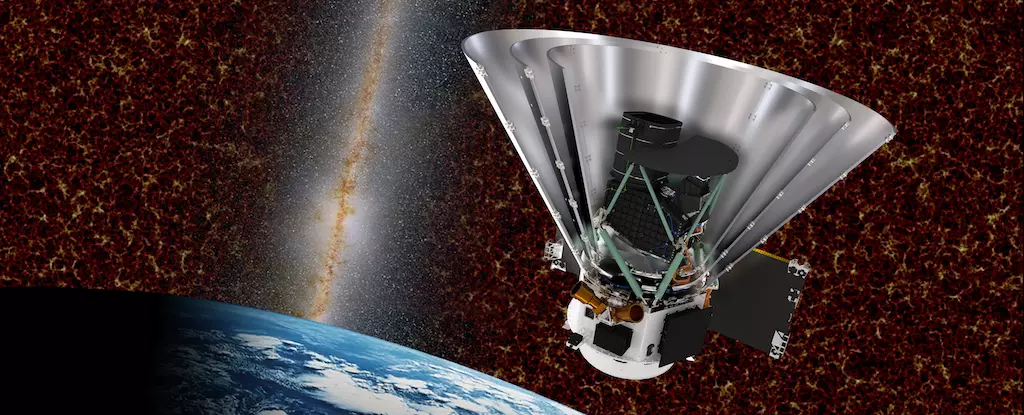NASA is on the verge of launching an ambitious mission known as SPHEREx, an endeavor set to unravel the mysteries of our universe by creating an unprecedented, vibrant 3D map of the entire sky. Scheduled for launch on February 28, the SPHEREx spacecraft aims to capture and analyze every single pixel in the cosmos over a two-year period. As it embarks on its journey, the implications of this mission could potentially transform our understanding of the universe as we know it. Each point in the sky will be examined through an infrared spectrum of 102 colors, a remarkable feat that far surpasses any previous attempt to map the universe.
Olivier Doré, an astrophysicist at NASA’s Jet Propulsion Laboratory and project scientist for SPHEREx, emphasizes the comprehensive nature of the mission: “We will examine everything in the sky and obtain a spectrum for every pixel—whether it be comets in our Solar System, distant galaxies, or anything in between.” With this extensive data, researchers hope to expand our knowledge and insight into celestial objects, peering into the fabric of our cosmos.
At the heart of SPHEREx lies its acronym, which stands for Spectro-Photometer for the History of the Universe, Epoch of Reionization and Ices Explorer. This succinctly encapsulates its trio of critical objectives. Firstly, the mission seeks to investigate what the universe looked like shortly after the inception of time—the Big Bang. Secondly, it aims to quantify the total light emitted from all the galaxies that have ever existed. Lastly, and perhaps most intriguingly, SPHEREx will examine vital ingredients essential for life, such as water, within our Milky Way galaxy.
To accomplish these ambitious goals, SPHEREx will make extensive use of the light spectrum that reaches its instruments from distant celestial sources. By analyzing the stretching and compressing of light wavelengths, the mission will be able to ascertain the distance of objects and their relative motion towards or away from Earth. This astrophysical technique not only makes the exploration possible but also provides the foundation for critical cosmic insights.
Upon completion of its mission, SPHEREx is expected to generate an expansive 3D map detailing the relative locations of approximately 450 million galaxies. This monumental chart will serve as a powerful tool for testing theories concerning cosmic inflation, a pivotal moment after the Big Bang that saw the universe expand exponentially in a minuscule fraction of time.
The positioning of galaxies within this cosmic web may have been influenced by the inflationary epoch, and SPHEREx will contribute vital data regarding their densities across space. Such information may either support simple inflation models, which hinge on the existence of a hypothetical particle called the inflaton, or hint at more complex scenarios involving multiple unknown fields and particles. The mission could potentially reshape current cosmological models, offering new windows into how the universe has evolved.
Moreover, SPHEREx possesses the capability to compile a comprehensive record of all light ever emitted by galaxies throughout cosmic history. By analyzing the journey that light has taken, scientists can derive insights about the origins of various celestial sources, the times at which they emitted light, and the evolution of light output over the ages.
On a more localized front, SPHEREx’s findings may provide invaluable insights into the existence of life beyond Earth. By searching for signatures of essential compounds such as water ice in star-forming molecular clouds, scientists can effectively assess the potential for life in our galaxy. Each elemental compound emits distinct spectral fingerprints based on its atomic properties, enabling researchers to dissect the components of these clouds.
The mission plans to conduct over 9 million observations of such clouds, gathering vital 3D data along each line of sight while searching for essential materials. A significant presence of these life-supporting compounds in molecular clouds may increase the chances of their incorporation into newly formed planets, fostering conditions conducive to life.
Regardless of the discoveries SPHEREx will unveil, its data promises to be an invaluable resource for scientists for years to come. The collaboration between SPHEREx and other high-profile observatories, such as the James Webb Space Telescope (JWST), will likely yield even more remarkable insights. According to Gary Melnick, an astronomer on the SPHEREx team, “If SPHEREx uncovers a particularly promising target, Webb can examine that specific location with heightened precision in areas where SPHEREx lacks sensitivity.”
As SPHEREx prepares for launch, anticipation grows regarding the wealth of knowledge it may reveal about our universe, our galaxy, and perhaps even the fundamental building blocks of life itself. The SPHEREx mission is not merely an exploration of the cosmos; it is an expedition into our past and a hopeful glance towards the future.

